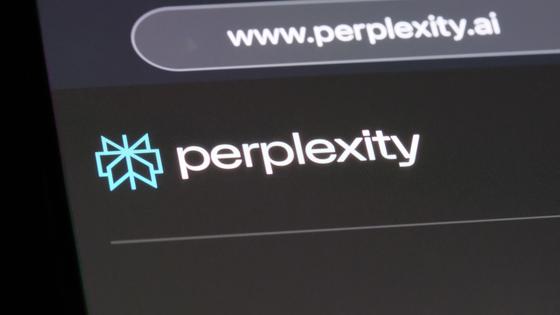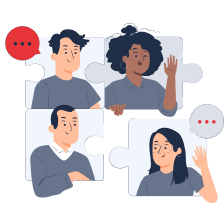How Educators Can Use the Perplexity Neural Network
Modern education is not standing still — AI-based technologies have fundamentally changed the learning process.

Along with various neural networks, a multitude of innovative solutions are emerging to improve the quality and accessibility of the educational environment. One of these is Perplexity. This neural network is designed not only for searching and organizing information. Perplexity is a true assistant for working in various fields, including teaching. We've found out how exactly this neural network can help educators and what tasks it can solve.
- Perplexity - A Next-Generation Search Engine
The creators of Perplexity - the neural network emerged in 2022 under the leadership of researchers Aravind Srinivas, Denis Yarats, Johnny Ho, and Andy Konwinski - claim that their product is also a next-generation search engine. Unlike traditional Google, Perplexity is capable not only of finding information but also of simultaneously analyzing dozens of sources, systematizing data, and offering only verified materials without making things up. So, if you enter a query into any regular search engine, it will return a huge number of links to various sources, the study of which will take the user quite some time. Moreover, many neural networks, such as DeepSeek or ChatGPT, often provide overly generalized information, do not cite sources, and frequently invent non-existent data. Perplexity, on the other hand, offers more systematized information, supported by sources, and therefore accurately reflects reality.
- Fast and Reliable Fact-Checking
In situations where it is important to quickly verify a certain statement without wasting time, Perplexity becomes an indispensable tool. It allows users to compare different points of view, identify inaccuracies and factual errors, check the relevance of statistics, and find the original source of a quote or fact. All of this helps avoid misinformation in educational materials, as well as supports educators and eases their workload in an information-saturated environment. Perplexity also offers the ability to choose the types of sources - that is, the materials it bases its responses to user queries on. For example, the Web option searches for the required data across the entire internet, Social - in social networks and media, while Academic, which is especially relevant for educators, searches for materials in scientific literature, specialized journals, manuals, and textbooks.
- Idea Generation
With Perplexity, you can set up a true brainstorming session and come up with an unusual topic for a lesson, creatively design supplementary materials, or find analogies between the subject being studied and current events in the world. For example, for a history lesson on medieval Europe, the neural network proposed this idea: "Divide the class into groups, each representing a specific social class: knights, peasants, monks, artisans, nobility, merchants. Each group receives a brief description of their role, clothing, lifestyle, duties, and rights." You can also ask Perplexity to enhance an existing idea and write a detailed lesson plan.
- Creating Educational Products from Scratch
Perplexity is also a unique knowledge constructor. This feature is especially valuable for educational methodologists. You can use it to generate course modules and topics, write explanations for subjects, and prepare materials for independent student work. That is, you can ask the neural network literally anything, and it will give a competent, well-reasoned, and verified answer - for example, explaining what nuclear physics is in simple terms, how to conduct a chemistry experiment with calcium gluconate, or which time period in history is known as the Migration Period, and so on.
- Developing Case Studies and Exercises
Perplexity can effortlessly offer various situational exercises. For example, you can ask the neural network to come up with a case based on real news, develop dialogues with alternative courses of action in different proposed scenarios, or describe several conflict situations for soft skills training, and so forth. Additionally, Perplexity can create assessment and review assignments on covered topics, generate tests, essay topics, evaluate them independently, and provide students with personalized recommendations.
- Creating Dialogue Simulators
The neural network can be used to develop and simulate dialogues and various role-playing scenarios. This is particularly relevant when teaching, for example, sales and business negotiations, rhetoric, international communication, and foreign languages.
Thus, neural networks - including Perplexity - are not meant to replace teachers, but to enhance their expertise. The use of artificial intelligence also allows for saving time on information retrieval, quickly verifying it, and offering students high-quality and personalized content.












 Test. What Winter Dessert Are You?
Test. What Winter Dessert Are You?
 What New Skills You Should Start Learning Today
What New Skills You Should Start Learning Today
 Top 4 Skills That Are Best Developed in Winter
Top 4 Skills That Are Best Developed in Winter
 Test: What Kind of Ancient Goddess Are You?
Test: What Kind of Ancient Goddess Are You?
 Test: Which Great Woman Would Invite You for Tea?
Test: Which Great Woman Would Invite You for Tea?
 Test: How Well Do You Balance Work and Personal Life?
Test: How Well Do You Balance Work and Personal Life?
